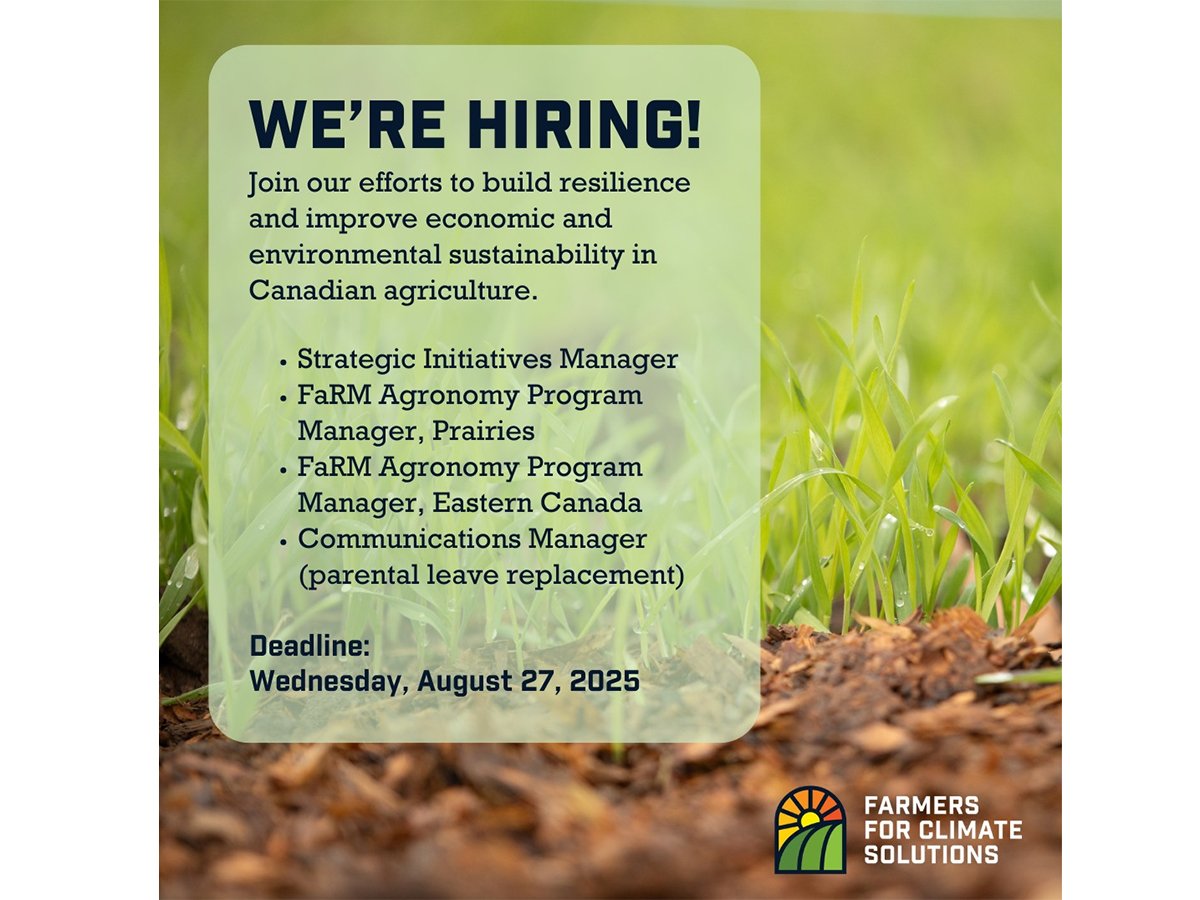The scientific debate over whether plowed soil sequesters the same amount of carbon as no till doesn’t apply to the Canadian Prairies, says an Agriculture Canada researcher.
Studies over the last 20 years have shown that zero tillage sequesters more carbon than plowed soil, but some soil carbon experts, including John Baker of the University of Minnesota, have said the experiments supporting no till were flawed because scientists failed to take soil samples at sufficient depth.
If samples were collected below 30 centimetres, Baker noted in a 2006 paper, the results would show that plowed soil sequestered as much carbon as no till soil.
Read Also

Environmental farm group has Ottawa’s attention
In 2021, Farmers for Climate Solutions published a report on how Canada should reduce emissions from agriculture. Not long after, the federal government implemented most of the recommendations in the report.
Brian McConkey, a soil and water conservationist with Agriculture Canada in Swift Current, Sask., said Baker may have a case, but the argument applies only to regions of North America where farmers have historically used moldboard plows.
He said moldboard plowing inverts the soil and buries crop residue at a depth of 20 to 25 cm. As a result, deeper sampling is needed to detect carbon in a tillage system where the soil is completely flipped.
“In Ontario, with a plow tillage situation, if you only sample to 15 to 25 cm, then you sort of miss that enriched layer in the plow system. You underestimate the amount of carbon in the plow system,” said McConkey, who authored a paper with several Agriculture Canada scientists that looked at the impact of soil sampling depths on differences in soil carbon stocks.
Nevertheless, McConkey said soil carbon experts in Canada have known for more than a decade that shallow soil samples exaggerated the amount of carbon sequestration in no till soil.
Baker may have reached that conclusion in the mid-2000s, but Canadian research in the late 1990s showed that sampling depth was critical in agricultural regions with moldboard plowing.
“Most American scientists don’t read much Canadian literature,” McConkey said.
Fields with a history of moldboard plowing might hold a similar amount of carbon as no till fields in Ontario, but that conclusion doesn’t apply to Western Canada, he added, because the tillage history in the region is significantly different.
“Even where we have discs … they essentially stir the soil up and mix the residue uniformly within the depth of tillage. That’s a very different process than an actual complete inversion that you get with moldboard plowing.”
As a result, Western Canada isn’t comparable to Ontario and the U.S. Midwest because moldboard plowing buries residue at greater depths where it decomposes slowly over time.
In their scientific paper, McConkey and his colleagues studied soil samples from long-term no till plots in Alberta and Saskatchewan and determined that no till soil held more carbon near the surface and more carbon in the entire soil profile compared to plowed soil.
He said this means the flawed sampling argument doesn’t hold water in Western Canada.
“They (Baker and others) are saying if you go deep enough (with soil samples), you lose the effect. What we’re saying is if we go deeper in the Canadian prairie situation, you get more carbon (from no tillage).”
This study may suggest that no till holds more carbon than plow tillage, but McConkey said that doesn’t mean it is the definitive study on the topic.
The case for no till and carbon is based on a body of work on the topic, which is why Canadian scientists and policy makers support the Alberta Offset System, where no till farmers are compensated for greenhouse gas sequestration.
Tom Goddard, an Alberta Agriculture policy adviser, said governments can’t change its policies on no till every time a new study comes out.
“What’s really valuable, from a policy point of view, is to look at these review papers where they look at everything published in the last number of years,” he said.
However, the Alberta government is revising some of its policies on no till and carbon sequestration. Details of those changes will be released shortly, Goddard said.















